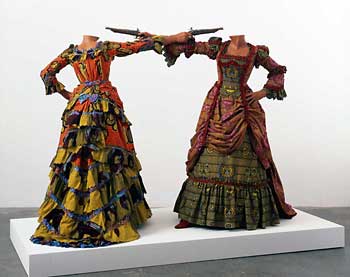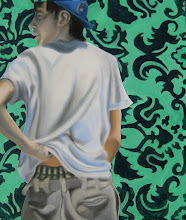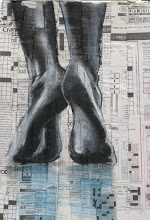Remember, your own answers may be wonderful and another way of looking at art so don't go changing a good thing you have, my Junior Art historians!
1. silhouette
2. undulating
3. shaman
4. abstraction, schematic
5. mimetic
6. no written language, no context to base observations on
7. additive, subtractive
8. Leonard Woolley
9. post and lintel
10. temple, tomb, votive with interior, block statue, sarcaphogi, mastabe, urn (with organs)
11. physical, artist/patron, historical, concepts/ideas
apparently there is no 12!
13. What is determined by context. The intended purpose of a thing.
14. To show movement, conceptual rather than optical
15. Afterlife will be rewarded (votives and offerings), gods live in "heaven" (temples on top of mastabas)
Thursday, September 10, 2009
Sunday, September 06, 2009
APAH Quiz Week 3
APAH Quiz 9-11-09
Kuntz
Vocabulary/Ideas and Concepts/Facts/Art and Architecture Terms
Clearly print or write your answers on the lines provided:
1. What is “The outline of a figure/form viewed as circumscribing a mass” called: ______________
2. The word often used to describe a surface that curves in and out: _________________________
3. A religious person thought to have special powers of healing or seeing the future: ____________
4. The simplest, most direct presentation of an image (often just using line): __________________ or _______________________.
5. The Greek word for the idea that earliest “art” was just copying nature: ____________________
6. Why is the function and context of Prehistoric art unknown?: ____________________________
7. The two basic methods of making sculpture are _________________or ____________________
8. Who discovered the Royal Cemetery of Ur? ___________________________________________
9. The method of construction used in Stonehenge ___________________and ________________
10. What is sacred space in ancient cultures? ____________________________________________________________________________________________________________________________________________________________
11. What are the 4 ways of thinking of context?
12. ________________ 2._________________ 3. _________________ 4.___________________
13. What is function? _______________________________________________________________
14. Why was twisted perspective (two points of view in the representation of a single figure) used? ____________________________________________________________________________________________________________________________________________________________
15. What was the Sumerian view of “afterlife” and name an example. Be specific. ______________________________________________________________________________
Kuntz
Vocabulary/Ideas and Concepts/Facts/Art and Architecture Terms
Clearly print or write your answers on the lines provided:
1. What is “The outline of a figure/form viewed as circumscribing a mass” called: ______________
2. The word often used to describe a surface that curves in and out: _________________________
3. A religious person thought to have special powers of healing or seeing the future: ____________
4. The simplest, most direct presentation of an image (often just using line): __________________ or _______________________.
5. The Greek word for the idea that earliest “art” was just copying nature: ____________________
6. Why is the function and context of Prehistoric art unknown?: ____________________________
7. The two basic methods of making sculpture are _________________or ____________________
8. Who discovered the Royal Cemetery of Ur? ___________________________________________
9. The method of construction used in Stonehenge ___________________and ________________
10. What is sacred space in ancient cultures? ____________________________________________________________________________________________________________________________________________________________
11. What are the 4 ways of thinking of context?
12. ________________ 2._________________ 3. _________________ 4.___________________
13. What is function? _______________________________________________________________
14. Why was twisted perspective (two points of view in the representation of a single figure) used? ____________________________________________________________________________________________________________________________________________________________
15. What was the Sumerian view of “afterlife” and name an example. Be specific. ______________________________________________________________________________
Subscribe to:
Posts (Atom)






